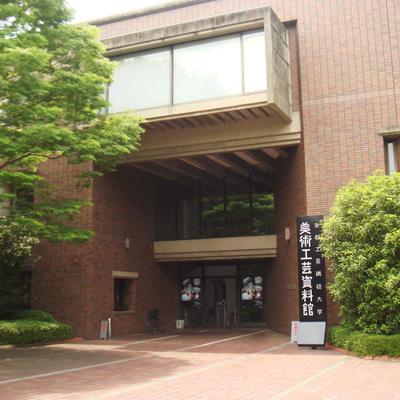Museum and Archives

The museum was established in 1980 within the Kyoto Institute of Technology campus to be jointly used as an educational and research facility. The building construction was completed in June 1981, and the museum was opened on October 3rd of the same year. While exhibiting the collections, the museum received additional successive works for the collection and began to operate as a full-scale organization for research. The collection of arts and crafts in the museum is based on the items collected during the building’s establishment, when it was known as the Kyoto Higher Craft School.
The Kyoto Higher Craft School was founded in 1902 (Meiji 35). The first principal and founding professors of the School were Iwata Nakazawa and Tadashi Asai and Goichi Takeda, respectively. In light of the emerging prospects for new design trends in Europe, genuine design education was launched for the first time by the school.
Asai and Takeda began to collect design-education teaching materials while they were in Europe. There were approximately 16,000 items in the collection when the Kyoto Higher Craft School museum and archives were established, and those items covered a number of diverse fields, including paintings, sculptures, metalwork, lacquerware, ceramics, textiles, and archaeological artifacts. A focus of the museum, since its opening, has been the enhancement of its poster collection. This started with the advertising drawings (posters) collected by Asai in Paris, as well as the posters collected by Takeda from German-speaking countries.
Additionally, architectural drawings (including the originals) were donated to the museum by architect Togo Murano in 1995. The museum has been organizing, researching, and studying these works and has been publishing them along with the results of the research. The number of works in the collection, as of March 2019, is approximately 54,000. The materials are made open to the public through permanent exhibits, with 6–8 special exhibits each year.